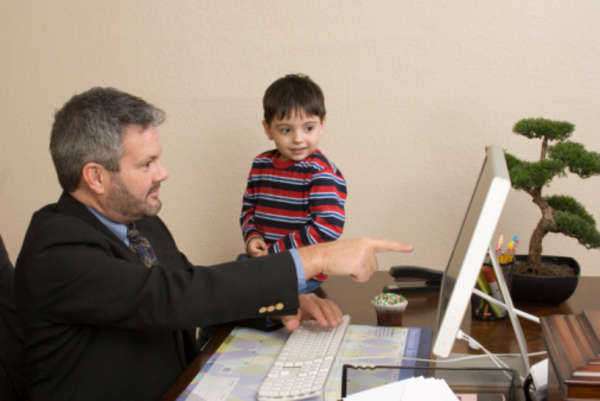Child Custody Battles: The Heart-Wrenching Struggles Behind Closed Doors

Child custody battles are often fraught with emotional turmoil, legal complexities, and profound implications for all parties involved, particularly the children. As parents navigate the challenging landscape of separation or divorce, the stakes are incredibly high, with the well-being of their children hanging in the balance. This article delves into the multifaceted nature of child custody disputes, examining the legal frameworks, emotional challenges, and potential pathways toward resolution that can help families emerge from these difficult situations with a focus on the best interests of the child.
Understanding Child Custody Battles: An Overview of Legal and Emotional Challenges
Child custody battles arise when parents cannot agree on the terms of custody following a separation or divorce. The legal framework governing these disputes varies by jurisdiction but generally encompasses two primary types of custody: legal and physical. Legal custody refers to the right to make significant decisions regarding a child’s upbringing, including education, healthcare, and religious instruction, while physical custody pertains to where the child resides. The emotional challenges are equally significant, as parents often grapple with feelings of loss, anger, and anxiety, which can cloud their judgment and hinder effective communication. The legal process can be lengthy and costly, further exacerbating the emotional strain on families. Understanding these dynamics is crucial for parents as they navigate the complexities of custody arrangements.
The Impact of Divorce on Children: Navigating Their Needs During Custody Disputes
Divorce can have a profound impact on children, often leading to feelings of confusion, sadness, and insecurity. During custody disputes, children may feel caught in the middle, experiencing loyalty conflicts and emotional distress as they witness the tension between their parents. It is essential for parents to prioritize their children’s emotional needs during this tumultuous time. Open communication, reassurance of love, and maintaining routines can help mitigate the negative effects of divorce on children. Additionally, parents should be mindful of their children’s reactions and provide age-appropriate explanations about the changes in their family dynamics. By focusing on the children’s well-being, parents can foster a more supportive environment that encourages healing and adaptation.
Types of Custody Arrangements: Exploring Legal, Physical, and Joint Custody Options
Custody arrangements can take various forms, each designed to meet the unique needs of the child and the family. Legal custody can be awarded solely to one parent or jointly shared, allowing both parents to participate in significant decisions affecting their child’s life. Physical custody, on the other hand, determines where the child will live and can also be sole or joint. Joint custody arrangements, which involve shared parenting responsibilities and time, are increasingly favored as they promote ongoing relationships between children and both parents. However, these arrangements require effective communication and cooperation between parents to succeed. Understanding the different types of custody arrangements is vital for parents as they work toward a resolution that serves the best interests of their children.
The Role of Mediation in Child Custody: Seeking Amicable Solutions for Families
Mediation has emerged as a valuable tool in resolving child custody disputes, offering a less adversarial alternative to traditional court proceedings. In mediation, a neutral third party facilitates discussions between parents, helping them identify their priorities and explore potential solutions collaboratively. This process encourages open communication and can lead to more amicable agreements that prioritize the child’s best interests. Mediation can also reduce the emotional toll on children, as it fosters a cooperative atmosphere and minimizes conflict. Additionally, parents who engage in mediation often report higher satisfaction with the outcomes, as they have a greater sense of control over the decisions affecting their family. By seeking mediation, parents can work toward a resolution that promotes stability and continuity for their children.
The Psychological Effects of Custody Battles on Children: Long-Term Emotional Consequences
The psychological effects of custody battles on children can be profound and long-lasting. Research indicates that children involved in contentious custody disputes may experience increased anxiety, depression, and behavioral issues. The stress of navigating parental conflict can hinder their emotional development and impact their ability to form healthy relationships in the future. Furthermore, children may internalize feelings of guilt or blame themselves for the discord between their parents. It is crucial for parents to recognize these potential consequences and take proactive steps to mitigate the emotional fallout. Providing a stable environment, seeking professional counseling, and fostering open lines of communication can help children process their experiences and develop resilience in the face of adversity.
Strategies for Parents: How to Co-Parent Effectively After a Custody Dispute
Effective co-parenting is essential for the well-being of children following a custody dispute. Parents should prioritize their children’s needs above their own grievances and work collaboratively to create a consistent and supportive environment. Establishing clear communication channels, setting boundaries, and maintaining a shared calendar for important events can help reduce misunderstandings and conflicts. Additionally, parents should strive to present a united front, avoiding negative comments about each other in front of the children. Flexibility and compromise are key components of successful co-parenting, as they allow parents to adapt to changing circumstances while ensuring that their children feel secure and loved. By embracing these strategies, parents can foster a positive co-parenting relationship that ultimately benefits their children.
Child custody battles are undeniably challenging, encompassing a range of legal and emotional hurdles that can profoundly affect families. By understanding the complexities of custody arrangements, prioritizing children’s needs, and seeking amicable solutions through mediation, parents can navigate these difficult waters more effectively. Ultimately, the goal should always be to create a nurturing environment that supports the emotional and psychological well-being of children, allowing them to thrive despite the challenges posed by parental separation. Through effective co-parenting and a commitment to collaboration, families can emerge from custody disputes with stronger bonds and a renewed focus on the best interests of their children.













